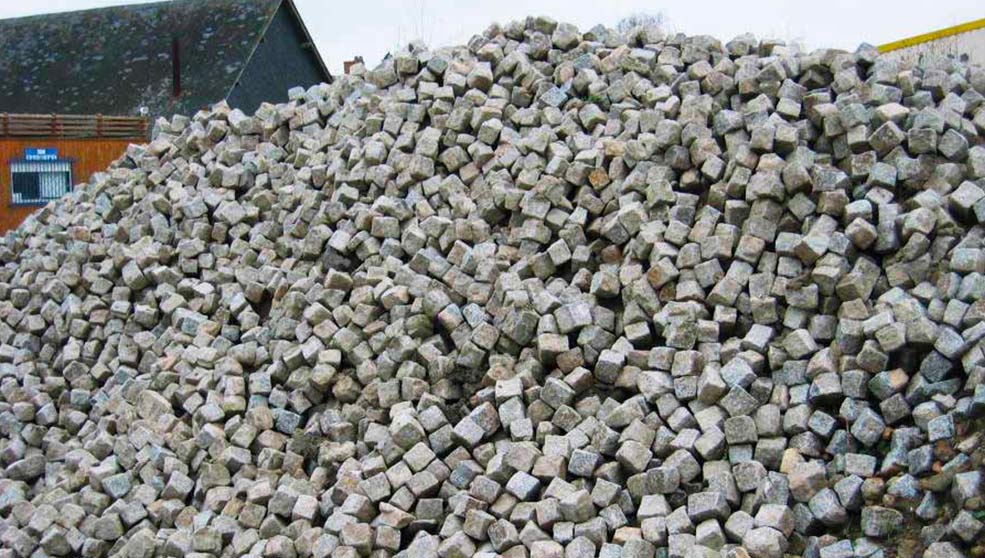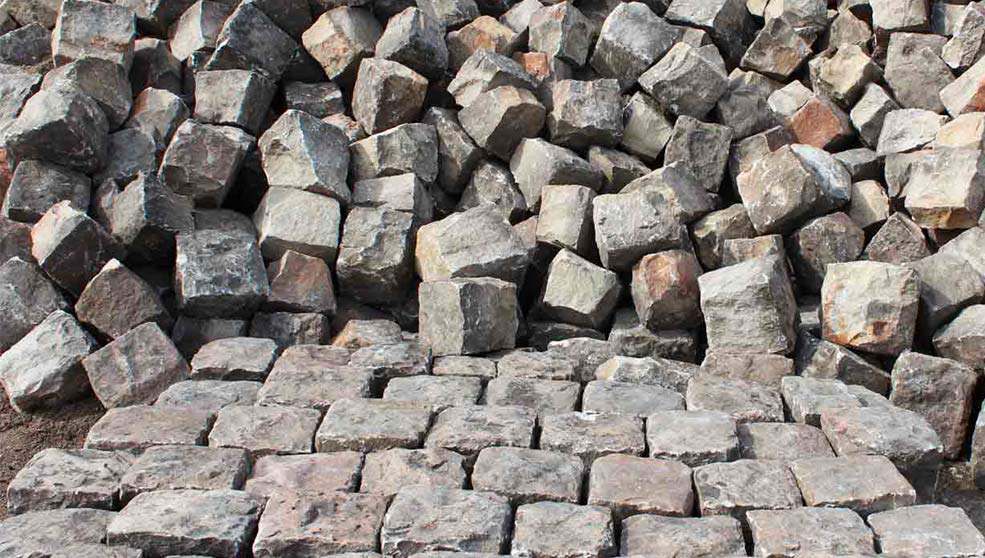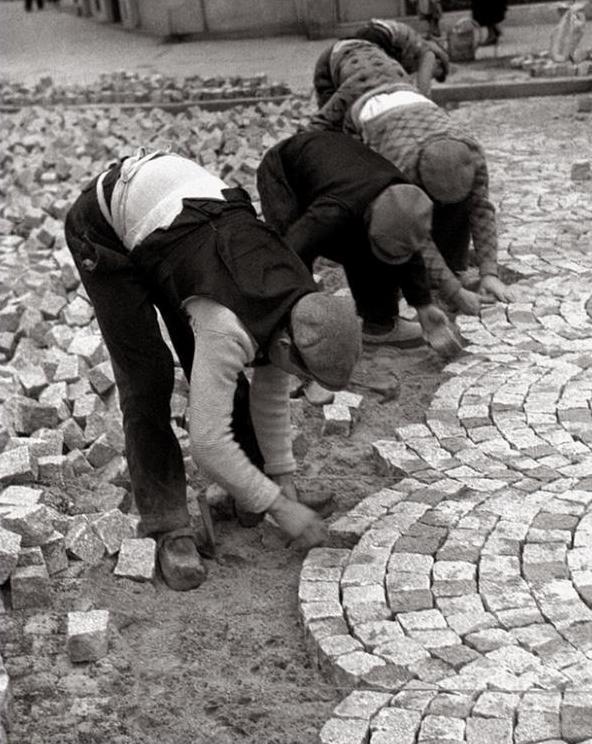What size are cobbles and setts ?
If the size, or range of sizes, isn’t clearly indicated on the description of the consignment on the BCA stock website, simply contact us so that we can measure typical stones and we’ll let you know.

The smallest reclaimed setts size regularly stocked are approx 10cm x 10cm x ht 10cm (4 x 4 x height 4 inches) in granite. We also regularly stock similarly sized gritstone (very hard sandstone) setts, and these small sizes were often used for laying fan patterns.
Readily available and corresponding to most clients’ requirements are our medium sized antique reclaimed setts in granite or gritstone, and when possible in limestone, which is more scarce.
They are in mixed widths for laying in same-width rows of 10cm, 12cm, 15cm (4, 5 & 6 inches) etc, and their lengths vary from a square to a double square. Their depth is typically 15cm to 20cm (6 to 8 inches). Their sides generally taper so the lower face is smaller than the top face, thereby enabling them to fit closely together when being installed. That they were prepared by hard manual work is clearly visible when you see the hammered sides.

The biggest reclaimed setts regularly in stock are the massive « Napoleon » sized approx. 25cm x 25cm x height 25cm (10 x 10 x 10 inches), generally of quite regular dimensions and specially prepared for aristocratic and civic properties where the available budget was far higher higher. They are in French gritstone whose provenance was usually from the quarries at Fontainebleau, near Paris.
They can still be seen and walked on at many of Paris’s principal monuments such as Les Invalides, and are considered the « crème de la crème » of historic French street paving.

However there will always be some exceptions when dealing with reclaimed materials, which is part of their unmistakably « antique-reclaimed » charm, so please don’t expect industrial precision from centuries-old materials.
If a much bigger format is required, we would direct your attention to our consignments of antique reclaimed flagstones.
We like to receive your questions and especially your photos showing the property and the stone type and era, and thereby assist you with the appropriate choices.
